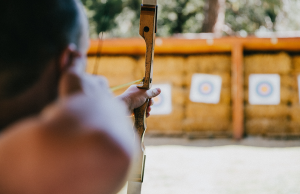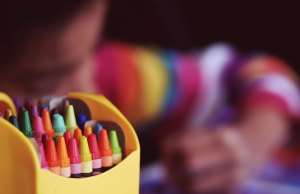Redirecting ADHD
Attention deficit/hyperactivity disorder (ADHD) and attention deficit disorder (ADD); strategies for parents and caregivers to use between counseling sessions to improve the effectiveness of therapy without the use of medication or combined with medication management.
As a Licensed Professional Counselor, I have been providing individual and family therapy services for many children and adults with ADHD and ADD.
This is a brief summary of interventions I typically recommend to clients and their families to improve the effectiveness of counseling/psychotherapy between sessions.
Prior to successfully implementing any of these strategies, it is important that the parent or caregiver has adequate self-care strategies in place. For example, if a parent/teacher is struggling with burnout, the strategies may not be implemented correctly because of personal fatigue. It is important that caregivers take care of themselves. Activities such as: exercise, eating balanced meals, getting adequate sleep, as well as having regular personal time, and having a solid support network are needs which typically need to be met prior to implementing interventions.
In addition, formal supports such as Individual, Family, and Group Counseling are formal supports which can be used to increase the chances of caregiver success.
The first things to keep in mind regarding ADHD and ADD, are the functional limitations which are part of the disorder. Let’s break down the characteristics in easy to understand parts.
- Inattentiveness; the person’s inability to focus on a multitude of tasks because they have significant difficulty multi-tasking. Keep in mind that stress also comes into play; many adults and children struggle with inattentiveness based on life stressors and not ADHD/ADD. Even if the sources of inattentiveness are different, the strategies for managing the situation are very similar.
Caregivers can help children, who have difficulty focusing, by giving them a single task with very specific directions. For example; “Johnny, when you pick up every sock, shirt, pair of underwear, pair of pants, and pair of shorts and place them in this laundry basket; then we can…”
In addition, making a game of the task will also increase the likelihood that the child will focus with more intensity.
For example, “Also, Johnny I bet you can’t get it done in less than 2 minutes, I dare you!” Of course you would have a big smile on your face. Once Johnny starts going and you see him run around the room gathering clothes, you would cheer him on and praise him for his speed and accuracy.
- Hyperactivity; the person has significant difficulty with sitting sedentary for periods longer than a moment. Hyperactivity can make it very difficult to manage especially if the child is bored or being directed to participate in an undesired activity. Children with significant amounts of unstoppable energy can be very exhausting for caregivers; which emphasizes the importance of caregiver self-care.
Hyperactivity can be overwhelming at time,s but here is one of many strategies which may be helpful for managing the symptom. A mother brings Johnny, a 6 year old boy who has been diagnosed with ADHD, to a doctor’s appointment and there is a 20 minute wait. Immediately, the mother’s anxiety shoots up and the thought goes through her head “I don’t know if we are going to make it waiting that long.”
After a few moments Johnny is now squirming in his chair, swinging his arms and legs and proceeds to leave his chair and roam around the room. A first step for guiding him would be stay calm and explain exactly what his expectation is “Johnny, come sit by mommy in the chair next to me, and if you need to get up ask me. When you sit down we can play a game.”
The organization and opportunity to play a game is important for children with ADHD because their symptoms typically exacerbate when they are bored or stressed. The mother say’s “Hey! lets play 20 questions: I am thinking of a tasty food you get twenty ‘Yes’ or ‘No’ Questions to figure it out.” Once the game starts, you praise him for “Asking good questions,” “Great job sitting by me, I love when we sit together,” and “You have been sitting so nicely and waiting patiently for the past few minutes, I wonder how much longer you can go?” Be sure to make the game initially easy, take turns, and increase the difficulty as the game continues. This is one of many strategies which I have seen significant success working with children with ADHD; with hyperactivity difficulties.
- Impulsivity; one of the hardest behaviors to manage for many caregivers is, the uncertainty and danger impulsive behavior can create. Keeping in mind, impulsivity is best described as uncertain, random behaviors which occur without much forethought.
Impulsivity can be extremely anxiety provoking and many parents of children with significant impulsivity difficulties sadly avoid many social situations entirely.
An example of a plan I have assisted in creating for a 5 year old boy with ADHD who visited my office looked like this – Johnny would typically run around and sometimes run away when his family would go the baseball field to watch his 9 year old brother play baseball. Johnny would typically run around whimsically and at times would even run in the street. The situation was simply dangerous and frightening for his mother.
The strategy which worked for his mother was to keep his time planned and keep him busy. Because impulsivity is a disorder which is aggravated by unplanned activity, Johnny’s mother and I planned several activities which would keep him busy. When Johnny was engaged he seldom was impulsive. For the beginning of the game she engaged Johnny at the playground and then brought him over to the field so she could watch her other son play.
When near the field, she allowed Johnny to play Angry-Birds on her iPhone. After that, she moved on to activity number two. This strategy is a generalized explanation of a complex but effective intervention which can be planned in a counseling session prior to implementing it. Nonetheless, there is hope. The overall message is to avoid idle time for children with difficulties with impulsivity. In addition, even a typical child without ADHD/ADD can become impulsive if bored or idle.
I hope you found the general information covered in this article helpful. Please keep in mind that each one of these examples are from real-life situations, but the interventions were carefully planned to meet the needs of each one of these children.













